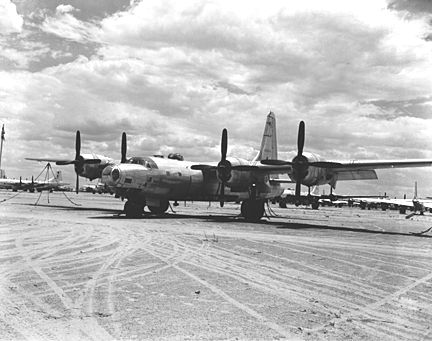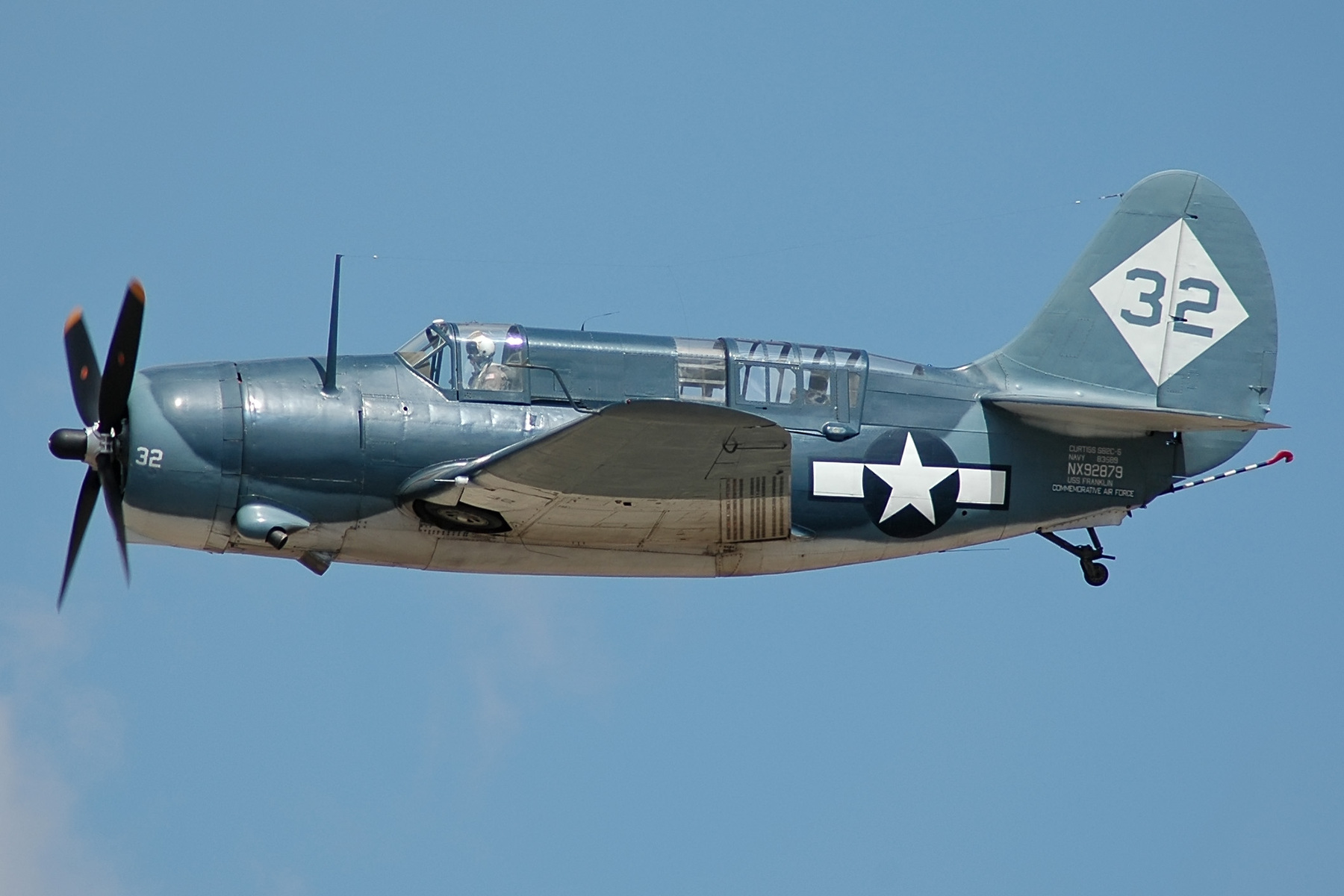Boeing B-17 Flying Fortress
The Boeing B-17 Flying Fortress was one of the most important heavy bombers for the Allies in World War 2. It was accounted for over 290,000 sorties and dropped over 640,000 tons of bombs, and it took control of the skies with it’s heavy armament (13 .50 caliber machine guns.) It’s name was given to it by a reporter that said it looked like a 15 ton flying fortress. Crews faced horrors such as Luftwaffe fighters and flak, while they were blinded by smoke, exhausted from turbulence, and in the high, numbing cold air. But it became very effective at bombing. One B-17, Old 666 had 19 .50 caliber machine guns, and fought 17 Japanese fighters by itself on a mapping mission, and survived.
Dimensions:
Length: 74.74ft
Width: 103.74ft
Height: 19.09ft
Performance:
Maximum Speed: 287mph
Maximum Range: 2,001miles
Rate-of-Climb: 541ft/min
Service Ceiling: 35,597ft
Armament Suite:
13 .50 caliber machine guns
Maximum internal bombload of 7,983 kg (17,600 lbs).
Structure:
Accommodation: 10
Empty Weight:36,136lbs (16,391kg)
Maximum Take-Off Weight:72,003lbs (32,660kg)
Engine(s): 4 x Wright Cyclone R-1820-97 radial piston engines generating 1,200 hp each.
 |
| Old 666 Crew |
Boeing B-29 Superfortress
The B-29 was mainly known for dropping the atomic bomb on Japan on August 6,1945. Dropping the atomic bomb ended the war in the Pacific, and also around the world. First flown on September 21, 1942, it entered service in 1943, and was one of the heavier aircraft made in World War 2. The B-29 was the first pressurize bomber, allowing it to go long distances at safe heights and deliver a tremendous blow to the enemy. It was meant to go from the US to Germany, but entered service too late, and it only served in the Pacific. It went on to help in the Korean War, and proved that it truly was a good aircraft.
Dimensions:
Length: 99.02ft
Width: 142.26ft
Height: 29.56ft
Performance:
Maximum Speed: 358mph
Maximum Range: 4,100miles
Rate-of-Climb: 526ft/min
Service Ceiling: 31,808ft
Armament Suite:
Standard:
12 .50 caliber machine-guns
1 x 20mm M2 cannon in tail turret emplacement.
Optional:
Up to 20,000lbs of internal ordnance.
Structure:
Accommodation: 10
Empty Weight:71,361lbs (32,369kg)
Maximum Take-Off Weight:141,102lbs (64,003kg)
Engine(s): 4 x Wright R-3350-23 Cyclone Eighteen air-cooled radial piston engines generating 2,200 horsepower each.
 |
| Cockpit of B-29 |
Consolidated B-24 Liberator
The Consolidated B-24 was a heavy bomber that first came to service in 1941. She flew in all of the major theaters. Although she was not as well liked as the Boeing B-17, the Liberator had a greater range, and a better top speed, with the same bomb-load. Though defensive, she had fewer machine-guns, and was not as durable. The Liberator was built around the Davis Wing, a Consolidated trademark. The Davis Wing was a thin wing mounted on the top of the plane. Although not a favorite, she was still, a very fine aircraft to fly in.
| Engines: | 4 x 1,200 HP Pratt & Whitney R-1830-65 radial piston engines |
| Dimensions: | |
| Wingspan | 110 ft 3 in |
| Length | 66 ft 3 in |
| Height | 18 ft 1 in |
| Performance: | |
| Max. speed | 303 mph |
| Ceiling | 32000 ft |
| Range | 2846 miles |
| Armament: | 10 x .50 cal machine-guns, 8800lbs of bombs |
Consolidated B-32 Dominator
The B-32 Dominator is definitely not as known as the B-29, but it was better in ways. The Consolidated B-32 had a high wing like most Consolidated aircraft. It was ordered as a backup if the B-29 had failed. Delays were caused technology and mechanical problems. Only 118 we’re made to the over 3,000 B-29s made. And even though it was the last US aircraft flown, it’s a miracle that it flew at all.
| Engine(s): | 4 x 2,200HP Wright R-3350-23 Duplex Cyclone 18-cylinder air-cooled turbocharged radial piston engines |
| Max Speed: | 357 mph |
| Max Range: | 2,992 miles |
| Ceiling: | 39,089 feet |
| Length: | 83.01 feet |
| Wingspan: | 135.17 feet |
| Height: | 33.14 feet |
| Empty Weight: | 27,000 kilograms |
| Loaded Weight: | 45,000 kilograms |
| Armaments: | 10 .50 cal. mgs |
| Up to 20,000lbs of internal ordnance |

Curtiss SB2C Helldiver
The Helldiver was the third aircraft supplied by Curtiss to the US Navy, and it was one of the last aircraft that was designed and produced in WWII. It was built to replace the Douglas SBD Dauntless. It joined service in 1943 on the USS Bunker Hill and fought along with the SBD. The Helldiver featured an internal bomb bay, which reduced the drag of the Helldiver. The first two prototypes crashed, one due to failure in the structure. It had poor handling, and was nicknamed the beast, and SOB 2nd Class. With problems, it still was one of the most successful dive-bombers in the war. It played a signifignant role in sinking the Musashi and the Yamato, both of which were some of the most heavily armed battleships of the war. The Helldiver saw service with US until 1948, when the Douglas Skyraider was introduced. There is only one remaining that can fly.
Engine: One 1,900-hp Wright R-2600-20 Cyclone 14 radial piston engine
Weight: Empty 10,547 lbs., Max Takeoff 16,616 lbs.
Wing Span: 49ft. 9in.
Length: 36ft. 8in.
Height: 13ft. 2in.
Performance:
Maximum Speed: 295 mph
Cruising Speed: 158 mph
Ceiling: 29,100 ft.
Range: 1,165 miles
Armament:Two 20-mm wing-mounted cannon and two .30 cal. machine guns in rear cockpit; Up to 2,000 pounds of ordnance on underwing racks and in fuselage bay.
 |
| Over Yorktown |








